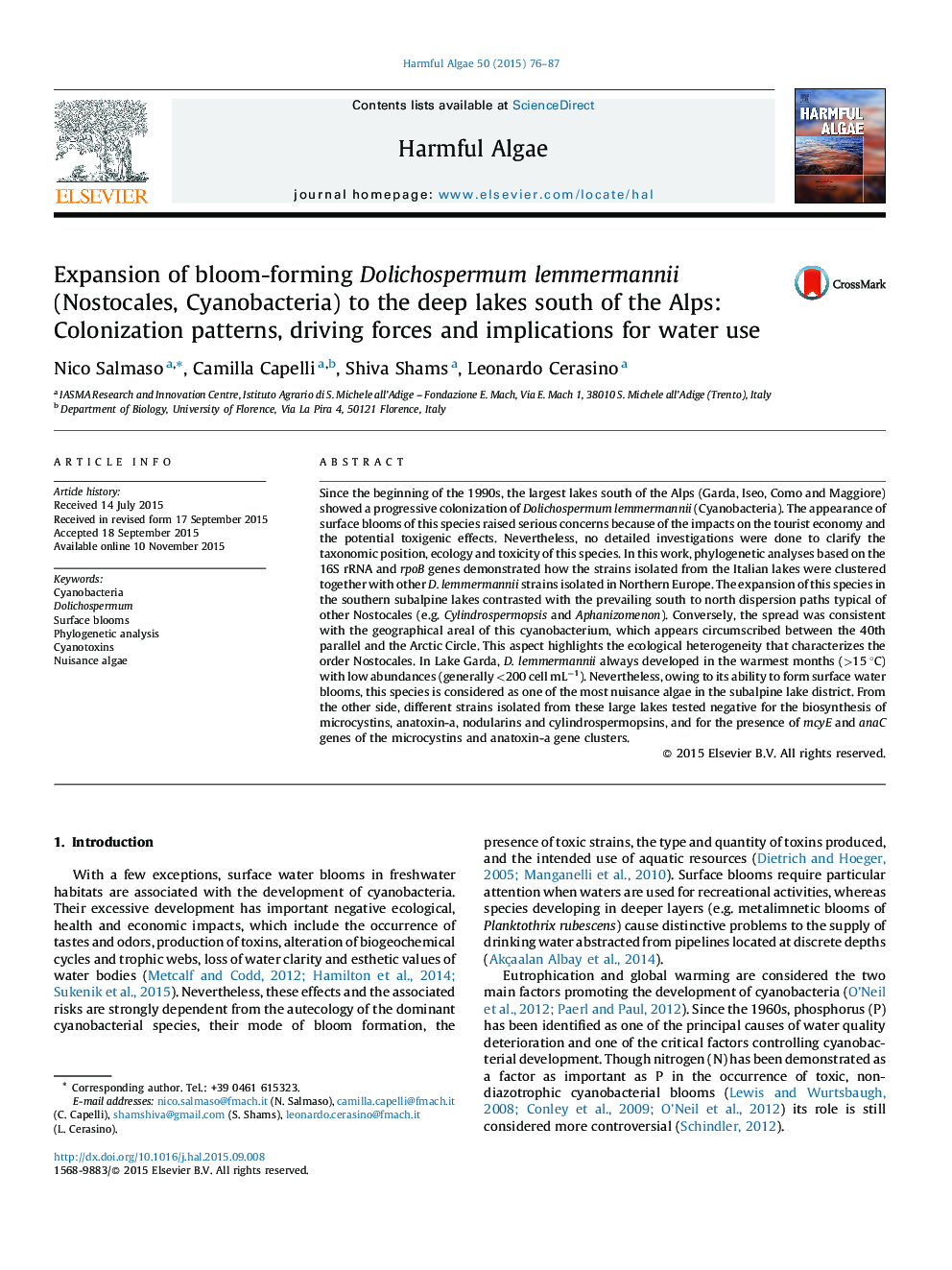| کد مقاله | کد نشریه | سال انتشار | مقاله انگلیسی | نسخه تمام متن |
|---|---|---|---|---|
| 6386163 | 1626921 | 2015 | 12 صفحه PDF | دانلود رایگان |

- Since the 1990s, the large lakes south of the Alps were invaded by Dolichospermum lemmermannii.
- The taxonomy of the strains was confirmed by phylogenetic comparison with N-European strains.
- The north to south expansion of this species contrasts with the typical dispersion routes of other Nostocales.
- D. lemmermannii always developed in the warmest months with low abundances.
- The species forms surface blooms and is considered as one of the most nuisance algae in the subalpine lake district.
Since the beginning of the 1990s, the largest lakes south of the Alps (Garda, Iseo, Como and Maggiore) showed a progressive colonization of Dolichospermum lemmermannii (Cyanobacteria). The appearance of surface blooms of this species raised serious concerns because of the impacts on the tourist economy and the potential toxigenic effects. Nevertheless, no detailed investigations were done to clarify the taxonomic position, ecology and toxicity of this species. In this work, phylogenetic analyses based on the 16S rRNA and rpoB genes demonstrated how the strains isolated from the Italian lakes were clustered together with other D. lemmermannii strains isolated in Northern Europe. The expansion of this species in the southern subalpine lakes contrasted with the prevailing south to north dispersion paths typical of other Nostocales (e.g. Cylindrospermopsis and Aphanizomenon). Conversely, the spread was consistent with the geographical areal of this cyanobacterium, which appears circumscribed between the 40th parallel and the Arctic Circle. This aspect highlights the ecological heterogeneity that characterizes the order Nostocales. In Lake Garda, D. lemmermannii always developed in the warmest months (>15 °C) with low abundances (generally <200 cell mLâ1). Nevertheless, owing to its ability to form surface water blooms, this species is considered as one of the most nuisance algae in the subalpine lake district. From the other side, different strains isolated from these large lakes tested negative for the biosynthesis of microcystins, anatoxin-a, nodularins and cylindrospermopsins, and for the presence of mcyE and anaC genes of the microcystins and anatoxin-a gene clusters.
213
Journal: Harmful Algae - Volume 50, December 2015, Pages 76-87